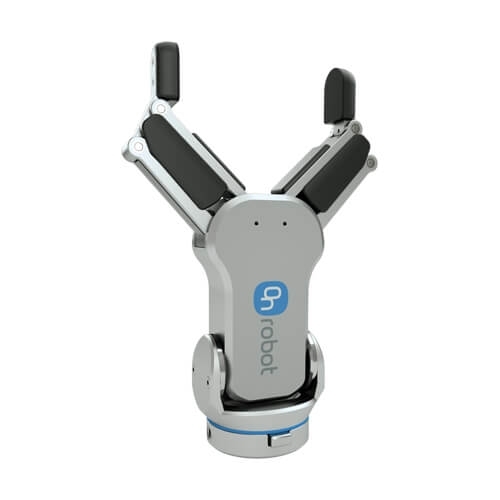In this post, we will give you a brief introduction to encoders and answer the most basic questions about encoders such as: What is an encoder, how does it work and where is it used?
What is an encoder?
An encoder is a sensor that provides feedback for accurate motor control related to speed and positioning. There are two main encoder types and these are known as incremental encoders and absolute encoders.
Incremental encoders identify feedback in real-time and track precise motion related to changes in position and direction, rather than referencing a specific point. They achieve this by providing feedback on the relative movement between positions with continuously high and low feedback pulses.
Absolute encoders on the other hand, show exact position, but their increasing complexity makes them more expensive and means that incremental encoders are often a more economical choice for most applications.
An encoder’s sensor usually operates on an optical or magnetic principle. Optical encoders pass infrared light emitted from an LED through a metal code wheel comprising clear and opaque segments that create distinct light signals received by optoelectronic sensors. This technology means that optical encoders are able to create very accurate and precise positioning. In addition to the high accuracy, the measurement of an optical encoder is unaffected by potential magnetic interference.
A magnetic encoder, on the other hand, consists of a magnetized disc with a number of poles around its circumference. Here, sensors detect the change in the magnetic field as the disk rotates, such as those measured by Hall-effect devices that monitor the change in voltage. Magnetic encoders are ideal for use in demanding applications that can potentially be exposed to impacts or ingress of unwanted dust, liquids, or the like.

Image credit: Machine Design
How does an encoder work?
As the encoder rotates, it generates two square signals, A and B, which are normally 90 degrees out of phase with each other. By measuring the phase shift of the A and B outputs, the direction of the encoder can be determined. To measure its travel distance or speed, the resolution of the encoder must also be taken into account. Resolution is the number of measurement points within a 360 degree rotation of the shaft. The greater the number of points, referred to as Lines per Revolution (LPR) or Pulses per Revolution (PPR), the greater the accuracy of the measurement.
Where are encoders used?
By understanding how encoders provide feedback to motor control, we can see how their use is crucial across different applications. For example, robotic grippers can be used to handle relatively fragile components. Its main task is to ensure that the right amount of pressure and speed is used to properly handle the components to avoid damaging them. Thanks to an encoder, the operation of the robot gripper is optimized by motion control of the motor speed and position specific to each component it handles. Similarly, pick and place applications used in the assembly of electronic equipment require high-speed motion control to quickly and repeatedly detect the size and weight of PCB components and place them with precision. Encoders enable this control at high speed and high accuracy to ensure productivity and quality of manufacturing.


Image credit: Onrobot
Conclusion
An encoder can therefore be beneficial in many different applications and the need for an encoder depends primarily on the main task/purpose of the application. We offer encoders from PWB Encoders and Portescap, among others, and we are available with our expert knowledge to help you find the right encoder for your project. Contact us today by phone
+45 74 42 18 64 or by email at info@gearcentralen.dk. Our skilled engineers are ready to answer your request as soon as possible.

